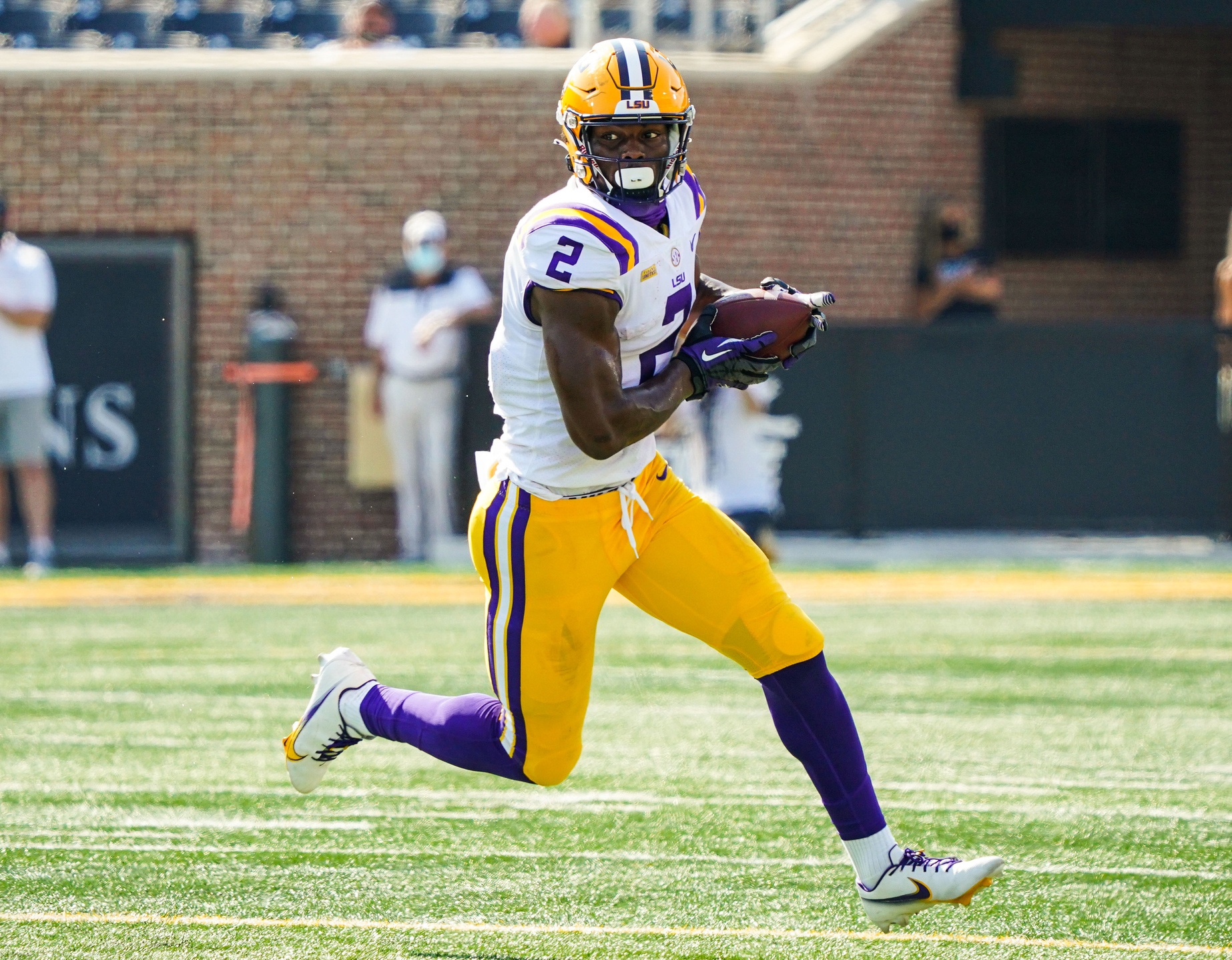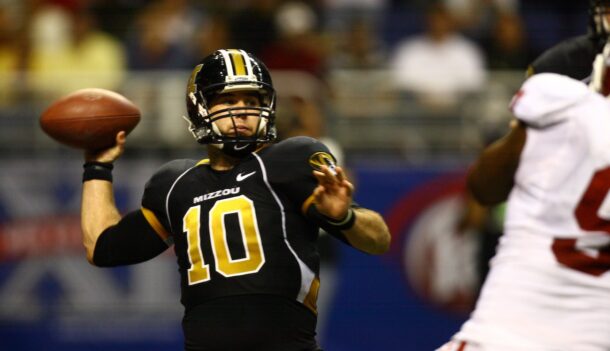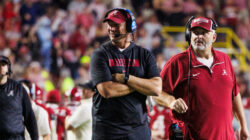
I know it’s hard, but for now, let’s put away the Kyle Pitts comps for Arik Gilbert
The second I saw that LSU transfer Arik Gilbert committed to Florida, I did what everybody else did — I referenced Kyle Pitts.
It’s the natural, obvious connection to make. Gilbert is the highest-rated tight end in the 247sports rankings era, and Pitts just delivered arguably the best season we’ve ever seen from a college tight end before leaving Florida early for the NFL Draft. The former replacing the latter means, duh, the comps are pouring in like an August rainstorm in Florida. Like I said, I’m already guilty of it.
But maybe, just maybe, we should do our best to hold off on the comps. For now. Not forever. Just, like, until the production warrants it.
That seems fair to Gilbert. And well, that’d probably be fair to Pitts, too. He just put together a historically dominant season and now the masses are assuming his successor will follow in his footsteps. As talented as Gilbert is, that’s still ambitious.
That’s coming from a Gilbert believer. That’s not based on his absurd high school accolades, but rather what he did during a strange true freshman season in Baton Rouge. Gilbert had more games with 4-plus catches (6) than Pitts, Hunter Henry and Evan Engram had as true freshmen combined.
Oops. There I go again with the Pitts comp.
You can say part of the reason Gilbert was in those spots was LSU basically overhauled its entire offense from the 2019 group that scored more points than any team in college football history, or you could say that was because Jalen Wydermyer was the only SEC tight end with more snaps as a pass-catcher.
It’s Wydermyer who should be the no-brainer choice for first-team All-SEC honors in the preseason. Actually, he has the best argument to be the first-team All-American tight end based on what he did all around in 2020. Wydermyer never left the field. The same was true for Pitts, who improved immensely as a run blocker in 2020. That, sprinkled in with the spectacular plays and the ability to be a matchup nightmare all over the field, was why Pitts earned PFF’s highest-graded offensive season of the Playoff era.
Now compare that to Gilbert, who is entering Year 2 of college. He’s playing a position that, historically speaking, isn’t easy to master given the knowledge needed to understand the entire playbook as a route-runner and as a blocker (he graded out similar to Pitts as a run-blocker but struggled immensely in pass protection). He’s now entering a new system with Dan Mullen, and barring a transfer, he’ll be surrounded by Keon Zipperer and Kemore Gamble, both of whom have multiple years of experience and should see a fair share of snaps. Gilbert isn’t expected to enroll until May, which means he won’t get spring ball. We’re also assuming he’ll be eligible, though given the nature of high-profile transfers, it’d be more a surprise if he isn’t ruled eligible even as an undergraduate.
If that sounds like I’m trying to lower the expectations for Gilbert, it’s because I am. It’s because if he doesn’t come out of the gates looking like Pitts, some will say that he’s overrated. They’ll ignore some of those aforementioned reasons for why a slow start could be imminent.
They’ll also ignore the fact that no college tight end has ever been compared to the 2020 version of Pitts. At least not from an expectations standpoint.
Of course, spend a minute watching the plays Gilbert made as a true freshman tight end against all SEC competition, and yeah, it’d be weird if the Pitts comp wasn’t all over the place:
Will Arik Gilbert be Kyle Pitts 2.0?
Here are the new #Gators transfer’s highlights from this past season. pic.twitter.com/0PcSJWzZgP
— SEC Football Vids (@SECFootballVids) February 1, 2021
Is Gilbert going to make plays like that in Gainesville next year? I bet he will. The guy was a target machine for essentially 3 LSU quarterbacks. That bodes well for being able to develop a rapport with Emory Jones. Pitts being on the same page as Kyle Trask was at the root of why there was never an insurmountable matchup.
Also at the root of Pitts’ historic season was the well-documented training time he spent in Atlanta during the shutdown. He turned into a freak of nature capable of cranking out 500-pound squats and bench reps of 315 pounds. For now, that’s perhaps the most realistic thing Gilbert can do to follow in Pitts’ footsteps. If the Marietta, Ga., native spent this offseason in Atlanta and put himself through the “Pitts training program for elite tight ends,” he’d be in position to take his game to a new level.
Regardless of whether Gilbert does that or eats doughnuts for the next 3 months (I’d bet on the former), he’s not going to be able to escape the Pitts comps. He had to know that the moment he even considered Florida as a possible destination. Even if Gilbert had stayed at LSU, he probably would’ve gotten Pitts comps for the rest of his time in college. Now, though, it’ll be every time he makes a big play.
I can already see Gary Danielson breaking down some side-by-side of Pitts and Gilbert during a 3:30 CBS game. Danielson will probably screw up and actually find a way to mistake Gilbert for Pitts multiple times.
(This isn’t an anti-Danielson rant, but close your eyes and tell me you can’t see that happening during a Florida game.)
There will be plenty of college football fans/analysts/writers and everyone in between who tell themselves that Gilbert is destined to repeat Pitts’ production. In theory, there’s nothing wrong with that. It’s a testament to Gilbert’s impressive season as an 18-year-old tight end who didn’t exactly get a normal preseason as an early enrollee at LSU.
But in reality, Pitts’ year might not be repeated by any college tight end any time soon. Twelve receiving touchdowns and 770 yards in just 8 games is such a ridiculous pace that even the 2 highest-drafted tight ends in the last 40 years never sniffed (Vernon Davis averaged 79 receiving yards and 0.55 touchdowns per game in his pre-draft year while Kellen Winslow Jr. averaged 56 receiving yards and 0.62 touchdowns per game in his most prolific season). There’s a chance that Pitts will join that club and become the third tight end in the last 40 years to be drafted in the top 6.
Gilbert, on the other hand, has 8 games of college experience.
It was a darn good start that bodes well for a prolific college career, but let’s just take it one step at a time. Don’t assume Gilbert can or should repeat Pitts’ 2020 production. Instead, assume that the LSU transfer will provide no shortage of flashbacks to Pitts’ brilliance. Being Pitts 2.0 is no small task. In the same way that being Joe Burrow 2.0 shouldn’t be thrown around lightly, Pitts set a new standard for the tight end position.
In fairness to both parties, let’s attempt to do the impossible and not constantly put their names in the same breath.
Connor O'Gara is the senior national columnist for Saturday Down South. He's a member of the Football Writers Association of America. After spending his entire life living in B1G country, he moved to the South in 2015.







